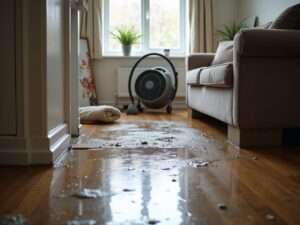What happens if you ignore a plumbing emergency? It’s not just about a leaky tap or a slow-draining sink. Delaying action can lead to structural damage, massive repair bills, and health issues you didn’t see coming.
The real cost isn’t always obvious right away. But give it time, and the damage multiplies.
It Starts Small, Then Escalates
Plumbing problems rarely stay the same. A dripping pipe under the sink might seem harmless now. But over days or weeks, that drip can turn into a constant flow. Water starts pooling. Moisture builds up. Materials weaken.
Wood rots. Metal corrodes. Mould spreads.
And the longer you wait, the harder it becomes to fix. What could’ve been solved with a quick repair turns into a costly replacement job. That’s the difference a few days can make.
Financial Blowouts You Don’t Expect
Here’s where the hidden costs come in. They add up quickly, and they’re often worse than the original problem.
- Property damage – Water can destroy flooring, walls, cabinets, and ceilings. Once soaked through, materials often need to be ripped out and replaced.
- Mould remediation – Damp areas invite mould, which is both dangerous and expensive to remove.
- Higher water bills – Even a slow leak wastes litres each day. Over a month or two, it can mean hundreds lost in water charges.
- Structural risks – Water weakens the foundation and frame of a home. You could be looking at major repairs if it spreads to beams or joists.
- Emergency call-outs – Waiting too long often means calling in someone after hours or in a panic, and those rates can be steep.
Many people think they’re saving money by waiting. But that delay usually means paying double or triple when the full scope of the damage reveals itself. Instead, it’s smarter to contact reliable emergency plumbing services Port Macquarie residents trust, so you can reduce both the cost and the stress before things spiral.
Health Hazards Lurking in Damp Corners
You can’t always see the health impact of a plumbing issue, but it’s there. Dampness creates the perfect breeding ground for mould spores, bacteria, and pests.
Some of the common issues that pop up in water-damaged homes include:
- Chronic respiratory problems
- Aggravation of asthma and allergies
- Skin irritations
- Increased presence of insects like cockroaches and termites
Once health is involved, the issue becomes far more than just home maintenance. It’s about safety and quality of life.
When the Problem Reaches Other Rooms
A delay in one area often leads to damage in others. A pipe behind the bathroom wall might burst, but the water doesn’t just stay in the bathroom. It seeps through floors, tracks into the next room, and seeps under skirting boards.
What was once isolated becomes widespread.
Bedrooms, lounges, and even kitchens can start showing signs of water damage. Paint bubbles. Plaster cracks. Wood swells and warps.
By the time it’s noticeable in those areas, the water has already been working its way through your home.
You Can’t Always See the Worst Part
One of the most dangerous things about plumbing emergencies is how often the real problem hides from view. A leaking pipe inside a wall cavity or beneath a floorboard might not show any symptoms at all, at least not at first.
But the damage keeps happening in silence.
By the time you spot a stain on the wall or a damp smell in the room, weeks of damage may already be behind you. That’s what makes prompt action so important. Waiting to see how bad it gets usually means discovering it’s already worse than you thought.
Insurance Doesn’t Always Have Your Back
Most homeowners assume insurance will pick up the bill. But if you delay repairs, you risk voiding your cover. Insurance providers often assess whether the problem was made worse by neglect.
If they find signs that you waited too long or failed to act when you should have, they might refuse to pay out. That leaves you to cover the cost out of pocket.
It’s a brutal surprise for many who thought they were protected.
Warning Signs You Should Never Ignore
There are a few key red flags that shouldn’t be brushed off. These are often the start of bigger issues:
- Low water pressure – Could mean a hidden leak or blockage
- Unusual smells – Damp, musty, or mouldy odours suggest moisture buildup
- Discoloured water – Rus
- ty or cloudy water could point to corroded pipes
- Constant dripping sounds – Even without visible water, that sound often means trouble
- Slow drainage – Might be a blockage now, but pressure can build and cause pipe damage
Acting early on these signs is always cheaper and safer than dealing with the fallout later.
The Ripple Effect on Daily Life
A plumbing emergency doesn’t just cost you money. It disrupts your day-to-day life. You might lose access to water for showers, cooking, and cleaning. You could be forced out of certain rooms while repairs happen.
In worst-case scenarios, families have had to leave their homes entirely due to water damage, mould, or unsafe structural conditions. That’s not just inconvenient. It’s life-disrupting.
Don’t Wait Until It Gets Worse
Waiting always feels easier. Until it isn’t.
The reality is that plumbing emergencies get more expensive, more dangerous, and more stressful the longer they’re left alone. It’s not just about a few drips or a puddle under the sink. It’s about what that water is doing behind the scenes.
If there’s any sign of trouble, act quickly. You’ll save yourself a lot of time, money, and stress by dealing with it early, before it grows into something much harder to fix.




